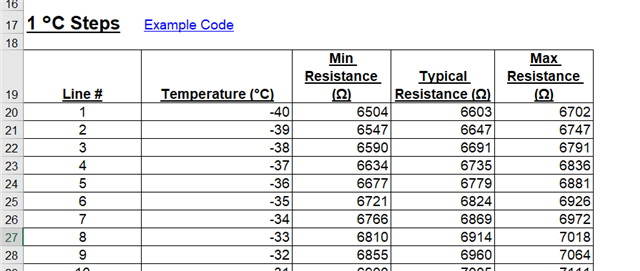Other Parts Discussed in Thread: TMP61
Hi Expert,
In calculation excel tool, I see bel0w tables. Could you please help explain what Min and Max resistor mean? I also see line1 and line2 have some resistor rang overlapping? Do you consider Vbias and Rbias error/tolerance in below table? Thanks a lot for help!

BR,
Elec Cheng


